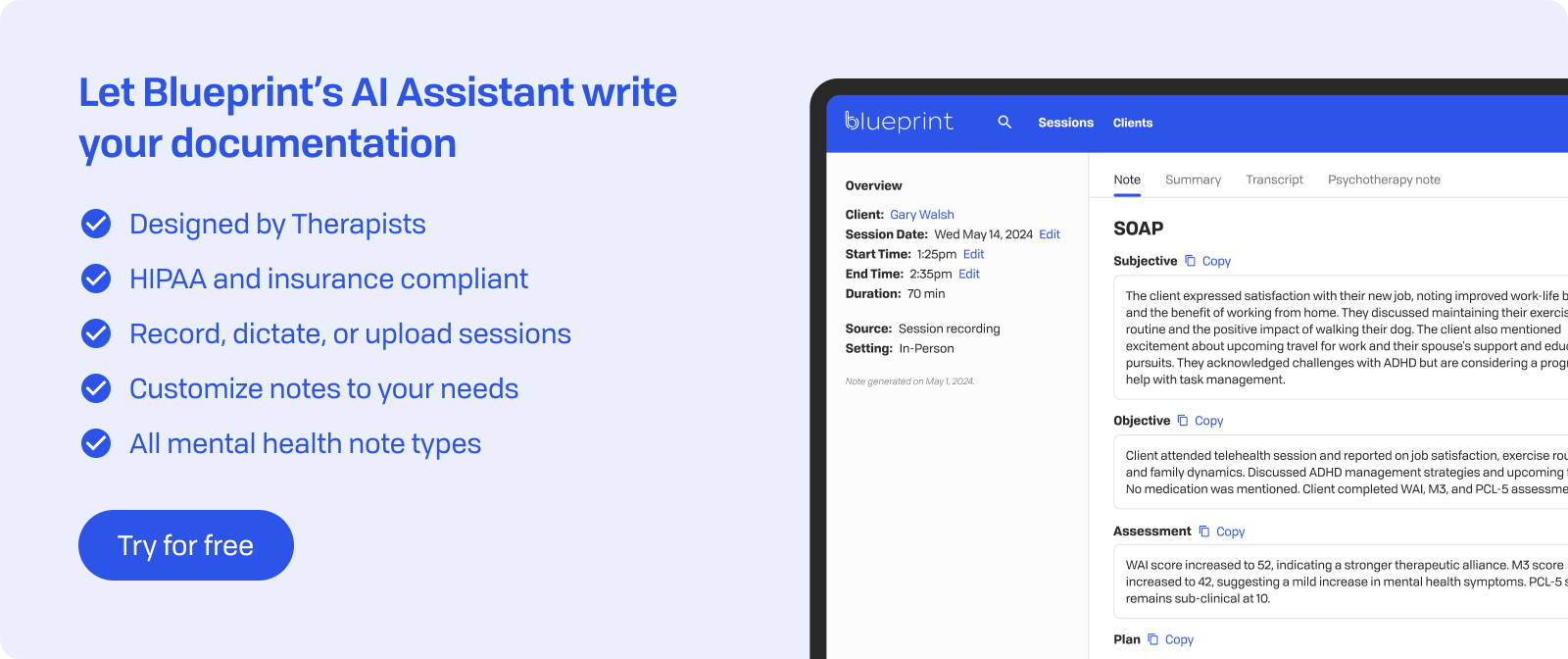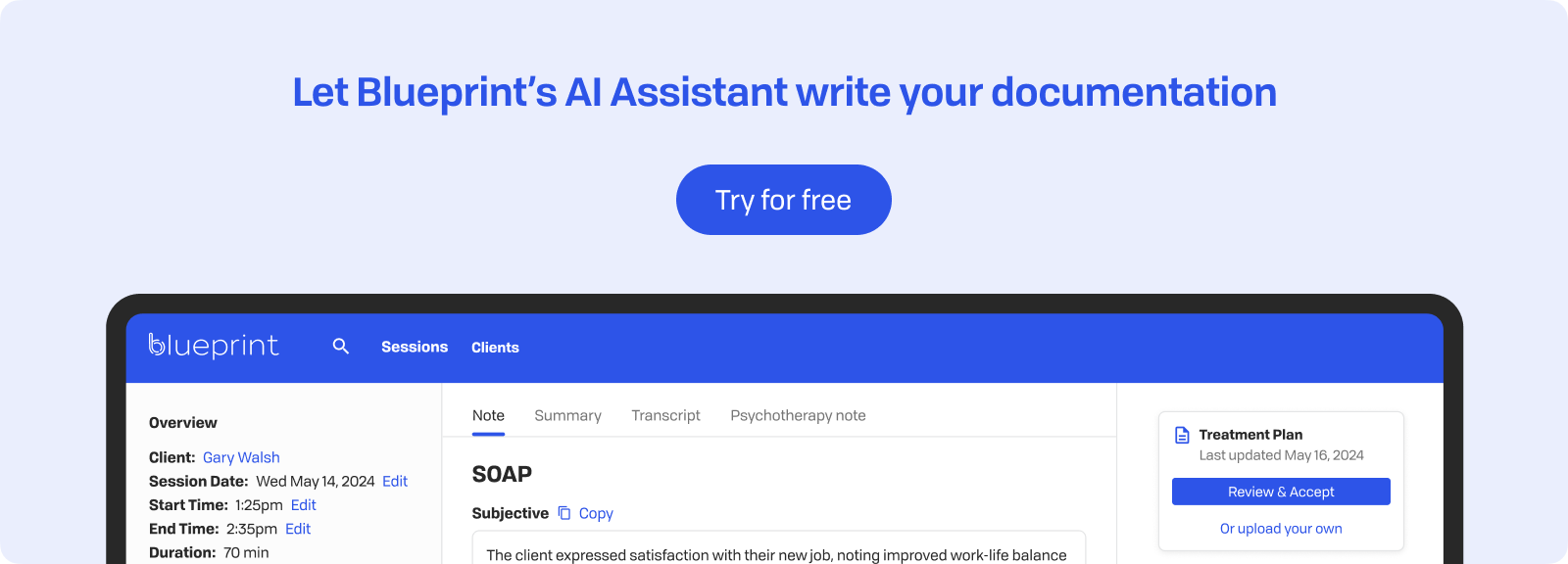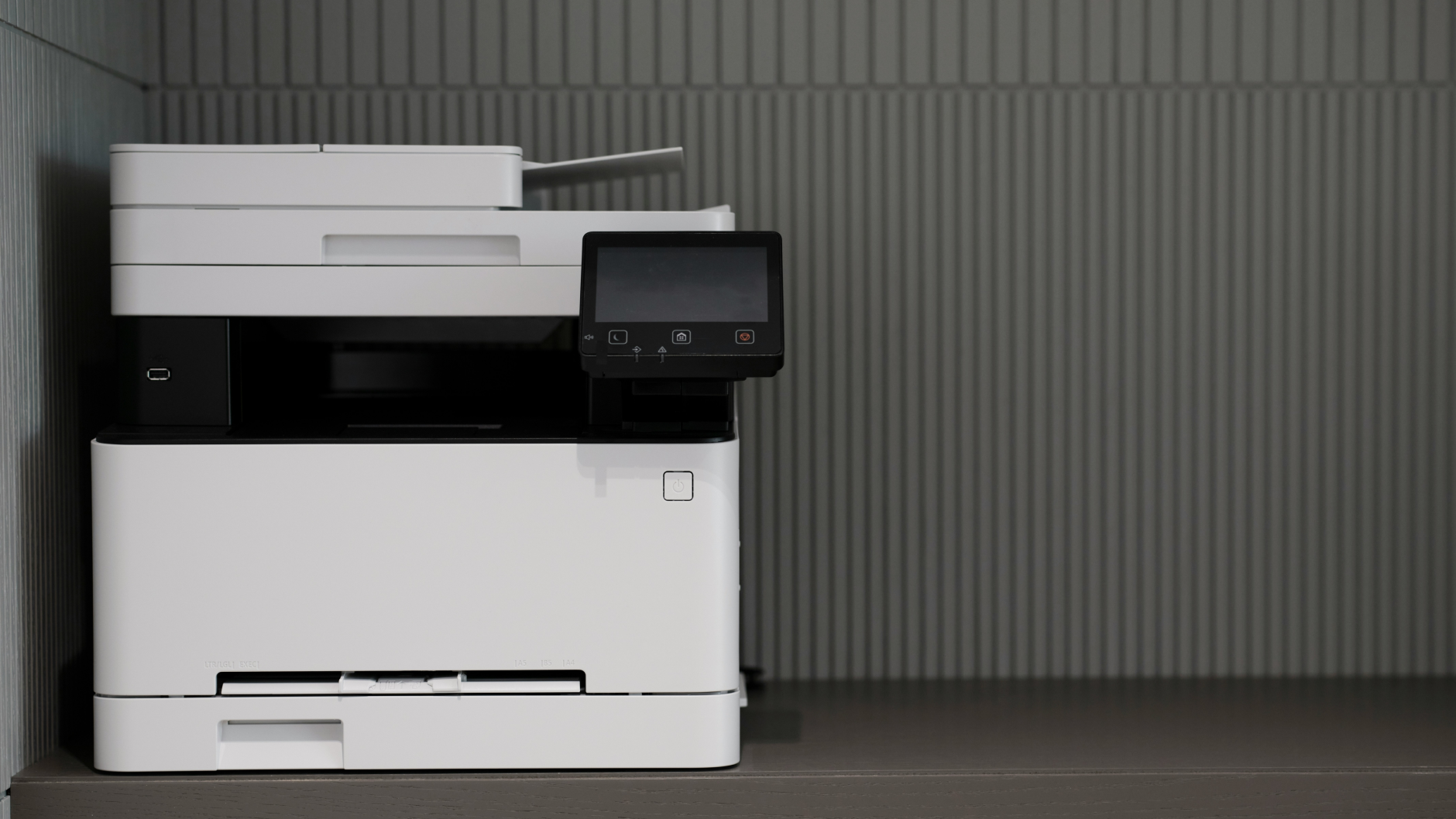In Brief
Faxing still plays a significant role in mental health practices. Many insurance companies, medical facilities, and government agencies require documents to be faxed. This situation presents therapists with the challenge of balancing convenience and strict privacy regulations.
Handling faxing and HIPAA compliance can feel daunting. A single mistake might expose sensitive client information and lead to significant penalties. However, with proper knowledge and practices, faxing can remain a secure communication method.
Maintaining HIPAA compliance while faxing goes beyond avoiding fines. It means preserving the trust your clients have in you. Let's look at how to keep your fax communications secure and compliant with current regulations.
HIPAA and Faxing in Mental Health Practice
HIPAA regulations cover all communication methods containing Protected Health Information (PHI), including faxes. Whether you send treatment summaries, insurance claims, or referral letters, handle these documents with the same security as any other client records. The law applies equally to all communication methods regarding client privacy protection.
Protected Health Information includes any details that could identify a client and relates to their health condition, treatment, or payment. This covers obvious identifiers like names and birthdates, as well as appointment dates, diagnoses, and treatment notes. Even seemingly minor details become PHI when combined with identifying information.
Some therapists question whether electronic faxing follows different rules than traditional paper faxing. Under HIPAA, both methods must meet the same security standards. Electronic faxing offers added security features like encryption and audit trails. Traditional fax machines pose risks, such as documents left in output trays where unauthorized individuals might access them.

Risks of Non-Compliant Faxing
Non-compliant faxing creates serious vulnerabilities that go far beyond simple administrative errors. When PHI is exposed through improper faxing, the consequences impact every aspect of your practice.
Financial penalties are the most immediate threat:
- Civil fines: Range from over $100 to over $2 million annually per violation
- Multiple violations: A single fax exposing several clients' information counts as multiple violations
- State-level fines: Attorneys general can impose additional penalties up to $25,000 per violation category
Criminal charges apply when violations involve intentional misconduct:
- Unknowing disclosure: Up to $50,000 fine and 1 year imprisonment
- False pretenses: Up to $100,000 fine and 5 years imprisonment
- Malicious intent: Up to $250,000 fine and 10 years imprisonment
Common pitfalls leading to violations include:
- Sending faxes to wrong numbers without verification
- Leaving received faxes in output trays
- Failing to confirm recipient authorization
- Not using cover sheets with confidentiality notices
- Faxing from public or shared machines
The damage extends beyond financial penalties. A single fax breach can destroy years of carefully built client trust. Your practice might face exclusion from Medicare and Medicaid participation, cutting off important revenue streams. Investigations trigger time-consuming audits and compliance overhauls that divert resources from client care.
These risks highlight that proper faxing protocols are necessary for protecting your practice, your clients, and your professional reputation.
Key Features of HIPAA-Compliant Fax Solutions
Choosing a HIPAA-compliant fax solution means knowing the important security features that safeguard client information. These features work together to create a strong security framework for your practice.
Encryption Standards: Modern fax solutions must use AES 256-bit encryption—the same high-level standard used by government agencies. This encryption protects PHI during two main phases:
- In transit: While data moves over networks or phone lines
- At rest: When stored on servers or in digital archives
Audit Trails and Access Controls: Detailed logging ensures accountability and meets HIPAA documentation requirements, including
- Detailed audit logs: Track who sent/received each fax with timestamps
- User authentication: Require unique login details for each staff member
- Role-based permissions: Limit access based on job roles
- Multi-factor authentication: Add an extra security layer for sensitive operations
EHR Integration: Easy integration with your Electronic Health Records system removes the need for manual data entry and reduces error risks. Look for solutions that enable direct faxing from within your EHR interface, automatic filing of received faxes to client records, and synchronization of fax logs with client documentation.
Secure Storage and Disposal: Digital fax solutions must provide:
- Encrypted storage: Keep all archived faxes protected
- Automatic retention policies: Delete old faxes according to your compliance schedule
- Secure disposal protocols: Ensure complete data destruction when documents expire
These features turn faxing from a compliance risk into a secure, efficient communication method that supports your practice's workflow while keeping client privacy intact.

Implementing Secure Fax Practices in Your Therapy Practice
Building a compliance-focused culture starts with clear policies and practical training. Your team should understand not just what to do, but why each step is important for protecting client information.
Develop Clear Fax Policies - Written procedures should cover every aspect of faxing PHI:
- Verification protocols: Require double-checking fax numbers against verified sources
- Authorization requirements: Specify who can send/receive certain types of information
- Cover sheet standards: Use HIPAA-compliant cover sheets without exposed PHI
- Secure handling: Set procedures for retrieving faxes immediately after receipt
Make Training Engaging and Practical - Avoid dull compliance lectures. Instead, use engaging approaches that stick:
- Real-world scenarios: Share anonymized examples of fax breaches and their consequences
- Interactive exercises: Create "Fax it or flag it?" decision games
- 5-minute video modules: Cover specific topics like proper cover sheet completion
- Quick reference guides: Post verification checklists near fax equipment
Conduct Regular Audits - Monthly spot-checks keep everyone accountable:
- Review fax logs: Ensure all transmissions follow proper protocols
- Test staff knowledge: Quiz team members on key procedures
- Check physical security: Make sure fax areas remain locked and monitored
- Update procedures: Revise policies based on audit findings
Annual refresher training keeps compliance top-of-mind while addressing any regulatory changes. Consider moving to secure cloud-based fax services that automatically log transmissions and provide better access controls than traditional machines.
Choosing the Right HIPAA-Compliant Fax Service
Selecting the best fax service involves closely examining security features, compliance capabilities, and practical aspects related to the size of your practice. Your choice between cloud-based and traditional solutions greatly affects your ability to stay HIPAA compliant.
Cloud-Based vs. Traditional Fax Solutions
Traditional fax machines come with inherent compliance issues:
- No encryption: Data moves unprotected over phone lines
- Physical vulnerabilities: Documents sit exposed in output trays
- Limited audit trails: Difficult to monitor who accessed information
- Single-line bottlenecks: One fax at a time slows down workflows
Cloud-based solutions address these issues by offering:
- End-to-end encryption: TLS and AES 256-bit protection for all transmissions
- Remote accessibility: Send and receive from any device
- Simultaneous processing: Manage multiple faxes without delays
- Automated logging: Complete audit trails for every transmission

Vendor Compliance Assessment
Important compliance features to confirm:
- Business Associate Agreement (BAA): Should be included at no extra cost
- HIPAA certification: Look for third-party compliance audits
- Data retention policies: Automatic deletion according to your requirements
- Access controls: Role-based permissions and multi-factor authentication
Cost and Scalability Considerations
Solo practitioners need affordable, entry-level plans with:
- Low monthly minimums (typically 100-500 pages)
- Pay-per-page overage rates
- Basic user management features
Group practices require:
- Unlimited user accounts
- Department-level permissions
- Volume discounts for high-usage scenarios
- API integration capabilities for custom workflows
The right service should balance security needs with practical considerations, ensuring compliance without interrupting your practice's workflow.
Integrating Faxing into Overall HIPAA Compliance Strategy
Your fax practices shouldn't stand alone—they need to fit smoothly into your broader privacy and security framework. Think of faxing as one piece of your communication approach that must align with every other method you use to protect client information.
Creating Unified Communication Protocols
Consistency across all communication channels prevents security gaps:
- Standardized verification procedures: Use the same recipient confirmation process whether faxing, emailing, or using secure messaging.
- Universal access controls: Staff permissions should be consistent across all platforms—if someone can't access certain records in your EHR, they shouldn't be able to fax them either.
- Integrated training: Cover all communication methods in your HIPAA training rather than treating each separately.
Coordinating Security Measures
Your fax security should work alongside other safeguards:
- Encryption standards: Match fax encryption levels with your email and file storage encryption.
- Audit trail integration: Combine fax logs with other communication records for comprehensive monitoring.
- Incident response alignment: Include fax-related breaches in your overall incident response plan.
Staying Current with Regulations
HIPAA requirements change as technology advances. Subscribe to updates from the Department of Health and Human Services, join professional associations that monitor regulatory changes, and schedule quarterly reviews of your fax procedures against current standards.
When new guidance arises—such as recent clarifications on encryption requirements for cloud-based services—evaluate how these changes affect your faxing practices. Regular policy updates keep your integrated approach compliant as regulations shift.

Case Studies: Lessons from Real-World Scenarios
Real-world compliance failures can teach us about fax security vulnerabilities and their consequences. These cases show how easily avoidable mistakes can lead to significant penalties and damaged reputations.
Notable Compliance Failures
St. Luke's Hospital in New York faced a $387,000 fine after sending two faxes containing patients' HIV status to their employer instead of the intended health plan. This case underscores the devastating impact of misaddressed faxes, especially with highly sensitive diagnoses. The error occurred because of inadequate verification procedures—staff failed to double-check the fax number against verified sources.
Children's Digestive Health received a $31,000 penalty for lacking a Business Associate Agreement with their fax service provider. This smaller fine still represents a significant financial burden for a specialty practice, proving that even technical oversights in vendor relationships can trigger enforcement actions.
Common Patterns in Fax Breaches
Analysis of multiple cases reveals recurring vulnerabilities:
- Verification failures: Staff sending faxes without confirming recipient authorization
- Training gaps: Employees unaware of proper PHI handling procedures
- Technology misuse: Using consumer-grade fax services without encryption
- Documentation lapses: Missing or incomplete BAAs with vendors
Preventive Measures That Work
Successful practices put in place multiple safeguards:
- Mandatory callbacks: Require verbal confirmation before sending sensitive information
- Pre-programmed numbers: Store verified fax numbers in secure directories
- Automated alerts: Use systems that flag potential mismatches in recipient information
- Regular audits: Review fax logs monthly to catch patterns before they become violations
These cases show that compliance needs both technological solutions and human vigilance.
Key Takeaways
Keeping client information secure through HIPAA-compliant faxing involves both technological solutions and consistent human practices. These steps will immediately improve your fax security:
Core Security Practices
- Verify before sending: Always double-check fax numbers against verified sources and consider callback confirmation for sensitive documents.
- Use proper cover sheets: Include confidentiality notices and HIPAA disclaimers without exposing PHI on the cover page.
- Apply minimum necessary standard: Send only the information required for the specific purpose.
- Secure physical access: Keep fax areas locked and retrieve documents immediately after transmission.
Technology Upgrades
- Transition to cloud-based faxing: This provides encryption, audit trails, and remote access capabilities.
- Ensure BAAs are in place: Confirm all fax service vendors have signed Business Associate Agreements.
- Enable authentication: Use multi-factor authentication and role-based permissions for all users.
Ongoing Compliance Actions
- Conduct monthly audits: Regularly review fax logs and test staff knowledge.
- Update training quarterly: Keep procedures current with regulatory changes.
- Document everything: Maintain detailed transmission records and incident reports.
Educational ResourcesStay informed through these channels:
- HHS Office for Civil Rights updates
- Professional association compliance newsletters
- Annual HIPAA security conferences
- Peer consultation groups focused on practice management
Small improvements in your faxing practices today can help prevent major compliance issues tomorrow. Start with one area—whether upgrading technology or refining procedures—and build momentum toward comprehensive fax security.

How Blueprint can help streamline your workflow
Blueprint is a HIPAA-compliant AI Assistant built with therapists, for the way therapists work. Trusted by over 50,000 clinicians, Blueprint automates progress notes, drafts smart treatment plans, and surfaces actionable insights before, during, and after every client session. That means saving about 5-10 hours each week — so you have more time to focus on what matters most to you.
Try your first five sessions of Blueprint for free. No credit card required, with a 60-day money-back guarantee.
























